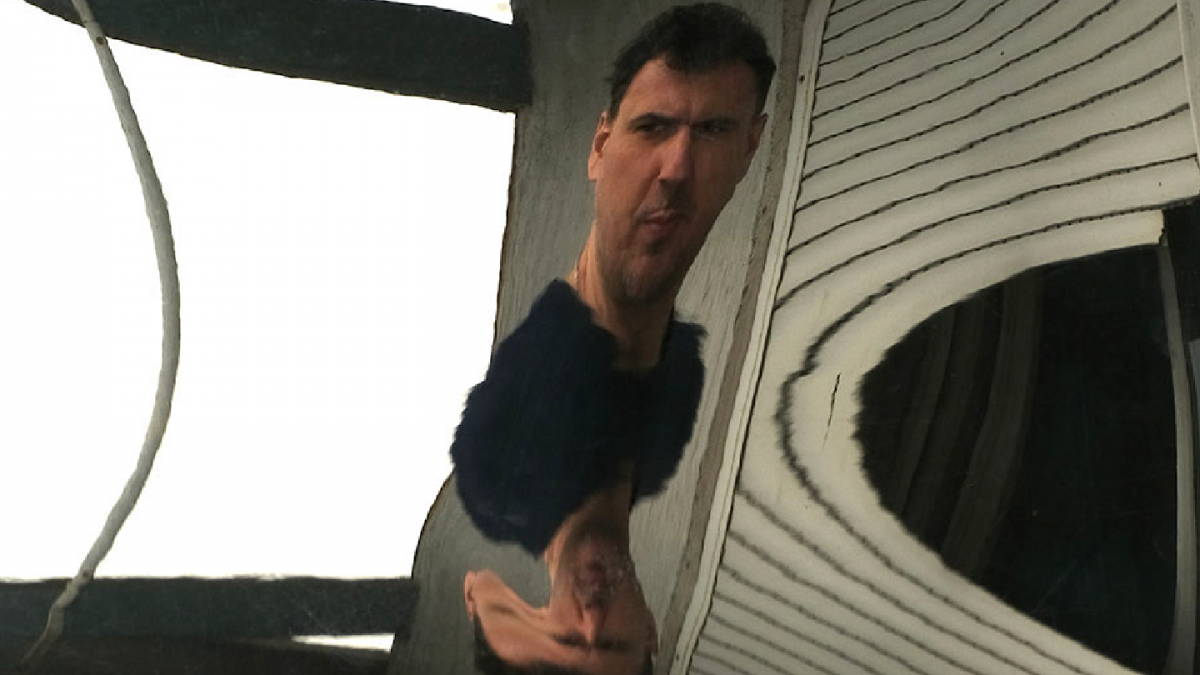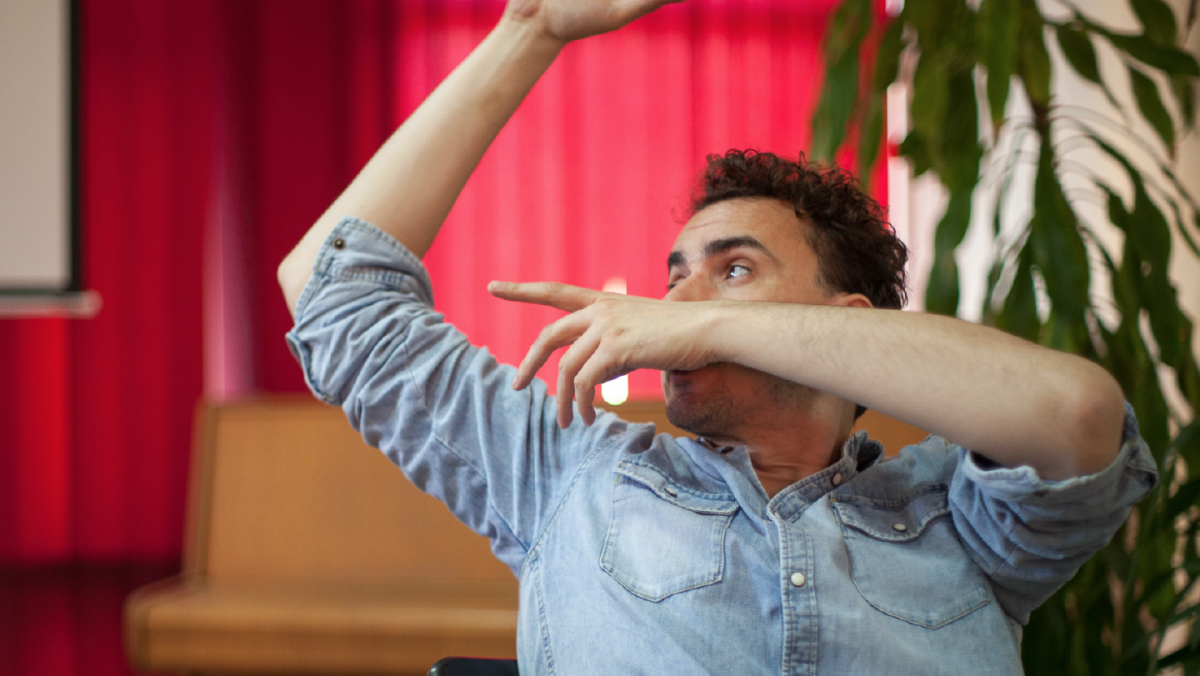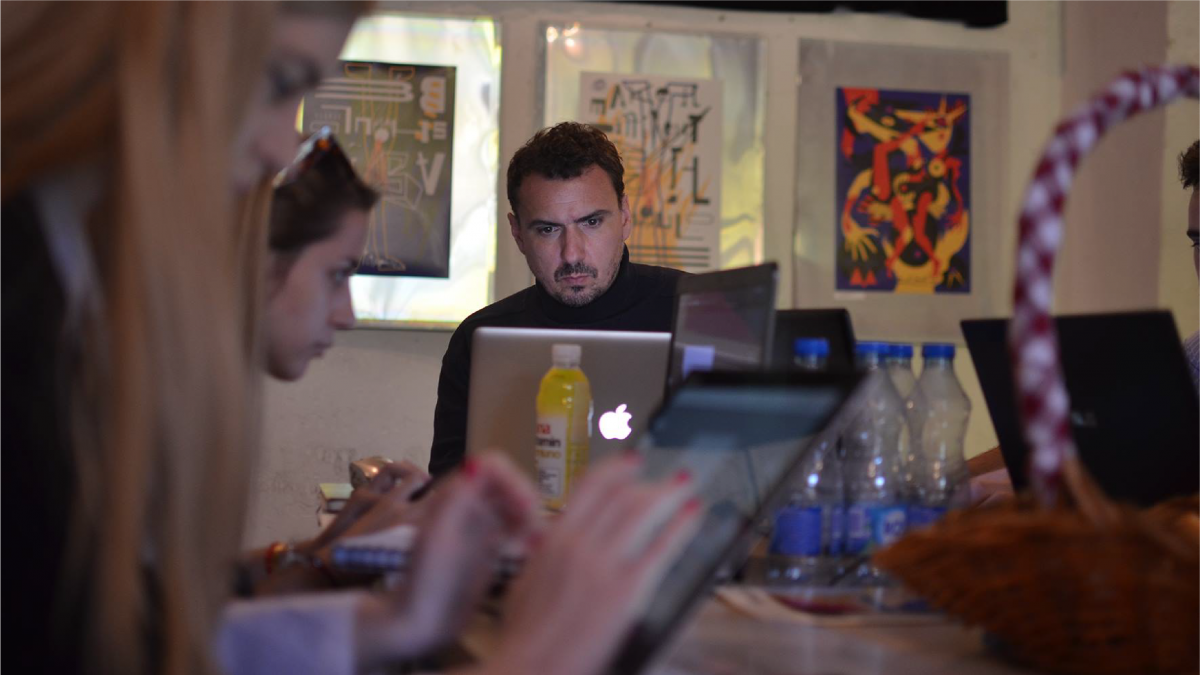He is a designer who, with over two decades of experience, very dedicatedly approaches every detail during the process, whether it is the work itself or the people he works with. He always carries with him good fashion, an analog camera, a huge backpack and a lot of humor that pleases everyone. Today’s column presents the winner of the “Griffon” award for 2018 and the mentor of the Pavle Beljanski Memorial Collection institution – Mane Radmanović.
 Good day Mane, and welcome to the interview column. We really appreciate finding the time to answer our questions. Accordingly, let’s start this talk by asking how much ReCulture is actually a part of your daily activities?
Good day Mane, and welcome to the interview column. We really appreciate finding the time to answer our questions. Accordingly, let’s start this talk by asking how much ReCulture is actually a part of your daily activities?
Hello and thanks for the invitation!
As the project progresses, I think I’m dedicating more and more time to it. I certainly think more about the project and talk about it with colleagues and friends. Right now, my team and I are in the phase of fine-tuning some design elements, so it definitely requires more dedication, work and thinking.
The first phase of work on the identity was recently completed. What is the atmosphere in the team about that?
From the very beginning we were confident in the identity we were working on. My team is the only one that actually worked on only one proposal for the client. Our investment of energy, time and deliberation resulted in a good comment, in the first place, and therefore a more relaxed atmosphere was guaranteed. We are aware of the reward and confirmation that we have been on the good and only road all the time.
How would you characterize the new identity of PBMC that was developed as part of the ReCulture project? How does it differ from the previous one and what does it bring to the presentation of this institution?
Quite spontaneously, we came up with a catchphrase that we often like to mention “We didn’t do much, but we did a lot!” and that is somehow an ideal measure of what we have done for the new identity of PBMC. Through conversations with the employees, and during the visit to the institution, we understood what was lost in communication, where noises are made, what is wrong and what needs to be emphasized.
I think that with the new identity we solved all the problems. We offer the institution a new mechanism for its use, but also how the institution communicates with the public. It seemed to us that PBMC had lost its position in the contemporary world, that it merged with the majority of cultural institutions in Serbia (which also need rebranding) and that it thereby undermined what Mr. Pavle Beljanski stood for. The new identity restores the integrity of the institution and places it in the place where it was at the time it was created and built – but today.
What is the designer’s progress so far compared to the starting point of the work? In which segments is the progress most noticeable?
I think that Djurdjina and Stefan complement each other perfectly, which they both see and say that. While Djurdjina is more conceptual and recitative, Stefan is a technician – a Swiss design school – and very carefully examines what is most important for the project and works it out. Djurdjina brings innovation, Stefan further develops it into real application, and vice versa. In the beginning, they were more shy about expressing their opinions, but now they are relaxed and aware that what they have done is a big thing, which gives them courage and self-confidence for the further course of work on the project.
What are the advantages and what are the challenges of organizing a team whose members do not live in the same country?
I honestly don’t have the feeling that we live in different countries. There are no cultural differences, the language may have been a kind of obstacle in the beginning, but we got so used to each other that there are no new challenges. Stefan travels a lot around the region, so he always finds time to stop by Belgrade to meet up with Djurdjin and me.
Would you mind sharing what has been the most challenging thing for you so far in working with young designers within this project?
First of all, harmonizing private obligations and time, both theirs and mine.
What characterizes your team?
Strong creative energy, innovation, commitment to the concept and context in which we operate.
What would you highlight as the most challenging part of working with CS institution PBMC from the point of view of a local mentor?
I think that institutions in Serbia are primarily afraid of change. And if it needs to happen, then it happens very slowly, which actually looks more like delaying the decision than implementing it. There are too many questions, there are too many concerns, what is missing is zest and positive energy. Another important thing is the institution’s lack of trust in professionals who deal with visual communications, so it often happens that designers fulfill the wishes of curators.
 Will you be able to complete the work on the rebranding of the institution in the 21 months it takes to work with the designers?
Will you be able to complete the work on the rebranding of the institution in the 21 months it takes to work with the designers?
I believe we will. 21 months seems like a long time, but actually the time passes very quickly. The project is very extensive and it is good that the different phases of work are separated, that the flow of phases is logical, so one follows from the other.
Share with us your observations and tips when it comes to design as a craft? How to deal with design in the right way?
The only correct way to do design (as well as any other job) is to love what you do, to cherish mutual respect between a designer and a client and, what we often don’t know and what we always learn, to know when enough is enough.
Can we then say that participating in short-term or long-term competitions is a desirable experience in honing knowledge?
I believe that it can be, especially on projects like ReCulture. The process is actually the most important thing and the good thing about the process in this project is that it is detailed, thorough, wide and long. Everything can be learned from it. I, who have more than 15 years of experience in graphic design, I am learning anew about the process both in working with others and in creative work.
What made the applications of Djurdjina and Stefan stand out among the large number of applications received?
Djurdjina – courage and creativity.
Stefan – professionalism and creativity.
What little or big joys does this project bring to you personally?
Acquaintances and travels.
Your first association with PBMC is…?
Modernism.
Your first association with the ReCulture project is…?
The process.
This was great! Maybe not too much, but this interview for sure did a lot for our readers 😀
Thank you again, mentor Mane!